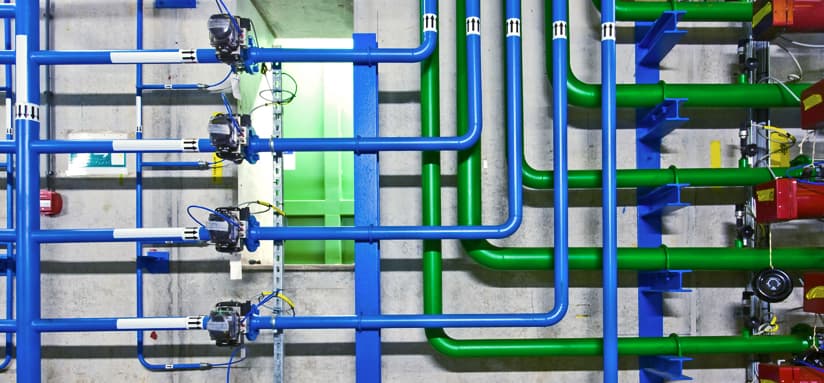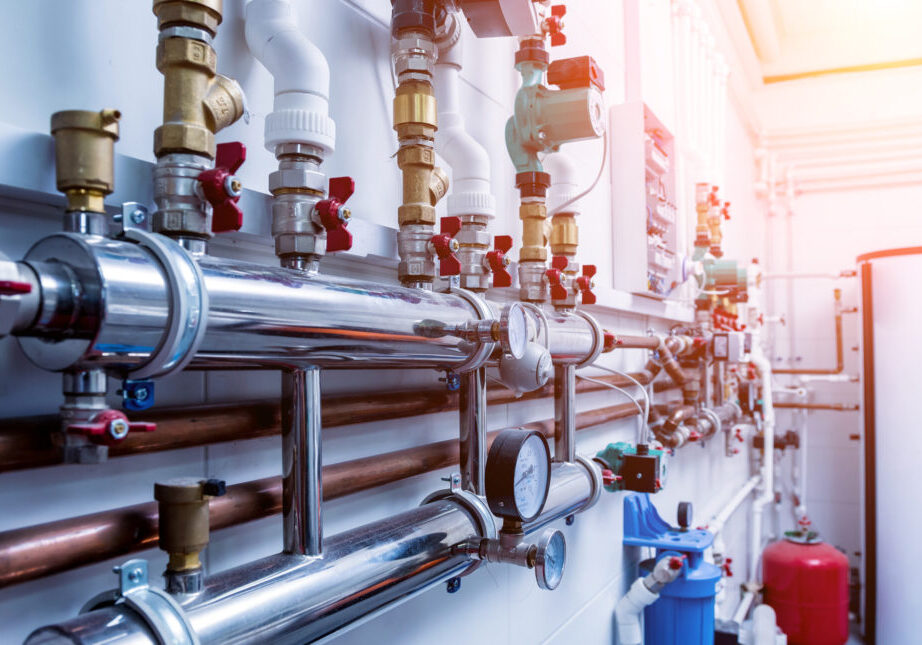What You Need to Know About Your House's Plumbing System Anatomy
What You Need to Know About Your House's Plumbing System Anatomy
Blog Article
Almost everyone is bound to have their unique conception in relation to Exploring Your Homes Plumbing Anatomy.

Comprehending how your home's plumbing system functions is crucial for every single home owner. From supplying clean water for drinking, cooking, and showering to securely eliminating wastewater, a well-kept plumbing system is essential for your household's health and convenience. In this comprehensive guide, we'll explore the detailed network that composes your home's pipes and offer ideas on maintenance, upgrades, and handling usual problems.
Introduction
Your home's pipes system is greater than just a network of pipelines; it's an intricate system that ensures you have access to clean water and reliable wastewater removal. Knowing its components and just how they interact can help you stop costly repair work and ensure every little thing runs efficiently.
Standard Parts of a Plumbing System
Pipelines and Tubes
At the heart of your pipes system are the pipes and tubes that bring water throughout your home. These can be made of various materials such as copper, PVC, or PEX, each with its advantages in terms of durability and cost-effectiveness.
Fixtures: Sinks, Toilets, Showers, etc.
Fixtures like sinks, toilets, showers, and tubs are where water is used in your home. Comprehending how these components connect to the plumbing system aids in detecting troubles and preparing upgrades.
Valves and Shut-off Factors
Shutoffs manage the flow of water in your pipes system. Shut-off valves are essential throughout emergency situations or when you require to make repair services, permitting you to separate parts of the system without interfering with water circulation to the whole residence.
Water System
Main Water Line
The main water line connects your home to the municipal water supply or a private well. It's where water enters your home and is dispersed to numerous components.
Water Meter and Stress Regulatory Authority
The water meter measures your water use, while a stress regulatory authority guarantees that water flows at a secure pressure throughout your home's plumbing system, preventing damages to pipelines and fixtures.
Cold Water vs. Hot Water Lines
Understanding the difference in between cold water lines, which provide water straight from the major, and hot water lines, which lug heated water from the hot water heater, assists in troubleshooting and preparing for upgrades.
Drain System
Drain Pipes Pipes and Traps
Drain pipes carry wastewater away from sinks, showers, and commodes to the sewer or septic system. Catches stop sewage system gases from entering your home and likewise catch debris that might cause obstructions.
Ventilation Pipes
Air flow pipelines allow air into the drain system, preventing suction that might reduce water drainage and cause traps to vacant. Proper ventilation is necessary for maintaining the honesty of your plumbing system.
Relevance of Correct Drain
Making certain proper water drainage prevents backups and water damages. Consistently cleansing drains pipes and keeping traps can prevent expensive fixings and extend the life of your pipes system.
Water Heating System
Kinds Of Hot Water Heater
Water heaters can be tankless or conventional tank-style. Tankless heating systems warmth water as needed, while tanks store warmed water for prompt use.
Exactly How Water Heaters Connect to the Plumbing System
Understanding how water heaters connect to both the cold water supply and hot water circulation lines helps in identifying problems like inadequate hot water or leaks.
Maintenance Tips for Water Heaters
Routinely purging your water heater to remove sediment, checking the temperature level setups, and examining for leaks can prolong its life-span and boost energy efficiency.
Typical Pipes Concerns
Leakages and Their Causes
Leaks can occur because of aging pipes, loose fittings, or high water stress. Resolving leakages promptly protects against water damages and mold development.
Obstructions and Clogs
Obstructions in drains pipes and bathrooms are commonly brought on by purging non-flushable products or an accumulation of oil and hair. Using drainpipe displays and bearing in mind what goes down your drains can avoid clogs.
Signs of Plumbing Troubles to Expect
Low tide stress, slow-moving drains, foul odors, or abnormally high water bills are signs of prospective pipes problems that must be resolved quickly.
Pipes Maintenance Tips
Routine Evaluations and Checks
Set up annual plumbing evaluations to capture issues early. Search for indicators of leaks, rust, or mineral build-up in taps and showerheads.
DIY Maintenance Tasks
Straightforward jobs like cleaning faucet aerators, looking for bathroom leakages making use of color tablets, or protecting subjected pipelines in cold environments can prevent significant pipes concerns.
When to Call a Professional Plumbing
Know when a plumbing problem requires specialist knowledge. Trying complicated repair work without appropriate expertise can cause more damages and greater repair costs.
Upgrading Your Plumbing System
Reasons for Updating
Updating to water-efficient components or replacing old pipelines can enhance water top quality, decrease water expenses, and enhance the value of your home.
Modern Plumbing Technologies and Their Benefits
Check out technologies like wise leakage detectors, water-saving bathrooms, and energy-efficient water heaters that can save money and reduce environmental impact.
Price Factors To Consider and ROI
Compute the in advance expenses versus long-term financial savings when taking into consideration plumbing upgrades. Many upgrades spend for themselves via decreased utility costs and less repair services.
Environmental Impact and Preservation
Water-Saving Fixtures and Appliances
Mounting low-flow taps, showerheads, and commodes can substantially decrease water usage without giving up efficiency.
Tips for Minimizing Water Usage
Straightforward habits like dealing with leaks promptly, taking shorter showers, and running full lots of laundry and dishes can preserve water and lower your utility bills.
Eco-Friendly Pipes Options
Consider sustainable plumbing products like bamboo for floor covering, which is durable and environment-friendly, or recycled glass for counter tops.
Emergency situation Preparedness
Actions to Take During a Pipes Emergency
Know where your shut-off valves lie and how to switch off the water supply in case of a ruptured pipeline or significant leakage.
Importance of Having Emergency Situation Contacts Convenient
Keep get in touch with details for regional plumbers or emergency services readily offered for quick response throughout a plumbing crisis.
Do It Yourself Emergency Situation Fixes (When Suitable).
Momentary fixes like making use of air duct tape to patch a dripping pipe or placing a bucket under a dripping tap can lessen damage until a specialist plumbing technician arrives.
Final thought.
Understanding the anatomy of your home's pipes system encourages you to maintain it properly, conserving time and money on repairs. By following routine upkeep routines and staying notified concerning modern plumbing modern technologies, you can ensure your plumbing system runs successfully for years to come.
HOW YOUR PLUMBING SYSTEM WORKS
Which Pipes Do What?
Blue lines = fresh water supply entering the building
Red lines = hot water supply entering the building
Grey lines = pipes carrying waste away from the building and venting pipes carrying gases away from the building (through the roof)
YOUR MAIN PLUMBING SYSTEMS
There are two main plumbing systems that support your home s basic plumbing needs one that brings clean water into your home, and one that sends dirty water away from your home. Connected to the toilet, bath, shower, and other faucets in your home, these two systems keep your water flowing in the right directions.
ACCESSING FRESH WATER
Fresh and clean water is brought into your home through the main water supply line . Filtered through one pipe, this water is pressured to flow into the various fixtures in your home at any given time.
This water can be sourced from a well located on your property, a pond or river (mostly cottages), or, as in most cases, from the city s municipal water treatment centre. However, it is important to note that water that is untreated, such as the water siphoned from ponds or rivers, may not be safe to drink. Personal water supplies always need to be treated for hardness and contaminants before consumed.
MUNICIPAL WATER SUPPLIES
Improve taste and odour
Remove sediment
Eliminate hardness
Reduce chlorine
COLD WATER SUPPLY VS. HOT WATER SUPPLY
Cold water flows into your home or building through the service line, which then distributes hot or cold water to your fixtures. This line is most commonly run through a central column that runs floor to floor. Hot water runs in short and straight pipes as the longer the pipeline, the more heat that will be lost in the transfer. Having shorter pipes also allows residents to access hot water more quickly.
WASTE WATER SYSTEM
Your wastewater system is divided into two parts pipes that send wastewater away from your home and venting pipes that send sewer gas away from your home. Sewage water travels through pipes that flush the water and waste towards local sewers that are operated and managed by your city or town. Most sewer systems rely on gravity to move the wastewater to where it needs to go.
The further away from your toilet or sink, the larger wastewater pipes become. This allows for waste to be disposed of from various parts of your home or business at once without pipe blockages. The angle and flow of these pipes are also essential for keeping your waste pipes clear of build up.
https://harrisplumbing.ca/how-your-home-plumbing-system-works/

HOW YOUR PLUMBING SYSTEM WORKS
Which Pipes Do What?
YOUR MAIN PLUMBING SYSTEMS
There are two main plumbing systems that support your home s basic plumbing needs one that brings clean water into your home, and one that sends dirty water away from your home. Connected to the toilet, bath, shower, and other faucets in your home, these two systems keep your water flowing in the right directions.
ACCESSING FRESH WATER
Fresh and clean water is brought into your home through the main water supply line . Filtered through one pipe, this water is pressured to flow into the various fixtures in your home at any given time.
This water can be sourced from a well located on your property, a pond or river (mostly cottages), or, as in most cases, from the city s municipal water treatment centre. However, it is important to note that water that is untreated, such as the water siphoned from ponds or rivers, may not be safe to drink. Personal water supplies always need to be treated for hardness and contaminants before consumed.
MUNICIPAL WATER SUPPLIES
COLD WATER SUPPLY VS. HOT WATER SUPPLY
Cold water flows into your home or building through the service line, which then distributes hot or cold water to your fixtures. This line is most commonly run through a central column that runs floor to floor. Hot water runs in short and straight pipes as the longer the pipeline, the more heat that will be lost in the transfer. Having shorter pipes also allows residents to access hot water more quickly.
WASTE WATER SYSTEM
Your wastewater system is divided into two parts pipes that send wastewater away from your home and venting pipes that send sewer gas away from your home. Sewage water travels through pipes that flush the water and waste towards local sewers that are operated and managed by your city or town. Most sewer systems rely on gravity to move the wastewater to where it needs to go.
The further away from your toilet or sink, the larger wastewater pipes become. This allows for waste to be disposed of from various parts of your home or business at once without pipe blockages. The angle and flow of these pipes are also essential for keeping your waste pipes clear of build up.
https://harrisplumbing.ca/how-your-home-plumbing-system-works/
We had been shown that write-up on Understanding Your Home's Plumbing Anatomy from someone on a different blog. Liked our entry? Please quickly share it. Help somebody else locate it. Kudos for your time. Don't forget to come visit our site back soon.
Try Here Report this page